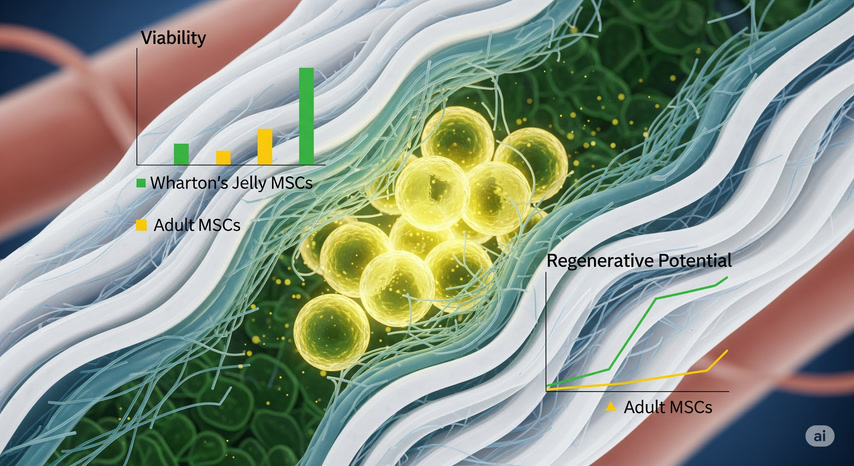How Donor Stem Cells
Reignite Healing
Understand how donor (allogeneic) mesenchymal stem cells don’t just repair — they activate your body’s natural healing systems through powerful paracrine signals.

Why Donor Cells Offer a Regenerative Advantage
Donor mesenchymal stem cells (MSCs), especially those derived from umbilical cord tissue, are not only biocompatible—they’re biologically active powerhouses. Unlike treatments that merely replace damaged tissue, these cells play a more dynamic role by activating the body’s own healing response.
Through a mechanism known as paracrine signaling, MSCs release a rich spectrum of bioactive molecules that stimulate local cells, promote blood vessel formation, and modulate the immune response.

How It Works: Cell Signaling, Not Just Cell Replacement
Donor MSCs actively drive regeneration by releasing a rich secretome of growth factors, cytokines, and extracellular vesicles (like exosomes), all of which coordinate the healing process.
This signaling encourages immune cells to shift toward healing states, stimulates new blood vessel formation (angiogenesis), and activates local cells to rebuild damaged structures.

The Unique Potency of Umbilical Cord Stem Cells
Umbilical cord MSCs are harvested from Wharton’s jelly — a rich, youthful tissue that produces higher concentrations of regenerative signals than adult-derived sources.
Their youth, purity, and immunomodulatory properties make them a powerful therapeutic option, demonstrating increased viability, reduced senescence, and greater expansion potential.
Practical Outcomes for Patients
This advanced signaling translates to tangible benefits. The ideal therapy doesn’t just deliver cells—it reignites the healing cascade.
Stronger activation of the body’s natural healing mechanisms
Less dependence on aging or compromised native stem cells
Longer-lasting effects, even after the donor cells are metabolized
Reduced inflammation and improved tissue oxygenation
The Power of Paracrine Signaling
Ready to Talk About Your Treatment Options?
Start with a personalized consultation to explore the right stem cell therapy for you.
GET STARTED